Sfeir-Semler Gallery is delighted to present Lebanese artist Rayyane Tabet’s third solo exhibition in our Hamburg gallery.
Comprised of three new installations, the exhibition takes as a starting point three moments of rupture in modern history, which are acutely remembered in 2025: the 80th anniversary of the atomic bombing of Hiroshima (1945), the 50th anniversary of the beginning of the Lebanese Civil War (1975), and the 5th anniversary of the Beirut Port explosion (2020). Crystalizing in material form the ripples of these violent episodes, the exhibition is both a poetic homage and a thoughtful meditation, reflecting on how the human, material and natural worlds endure in the wake of devastation.
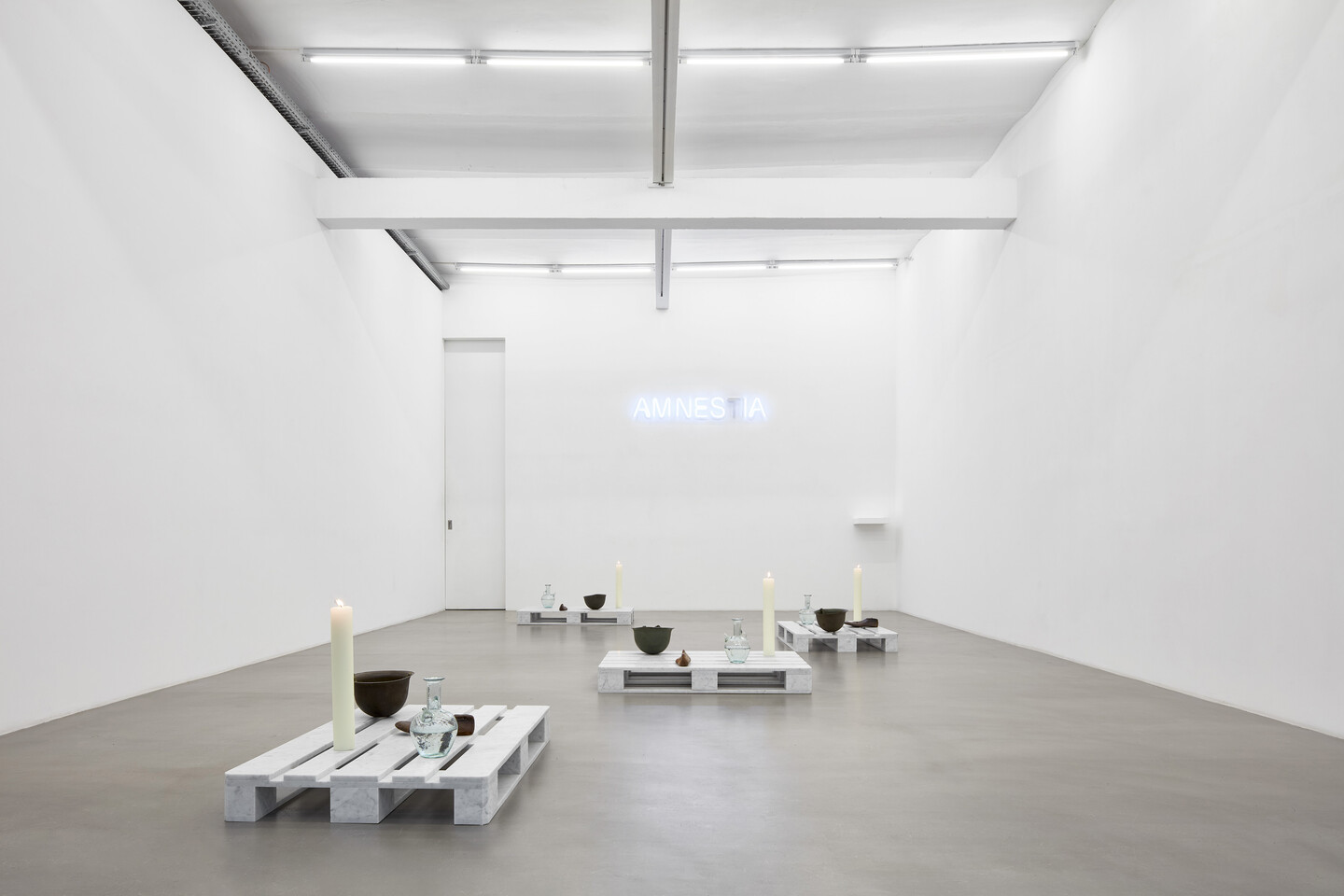
In the ground floor space, Tabet presents Adieu Aux Larmes an assemblage of objects spanning three generations, displayed on marble pallets: glass carafes made from shattered debris of the Beirut Port blast (August 4, 2020), helmets used by different militias during the Lebanese Civil Wars (1975-1990) collected by the artist’s father over the years, and wooden molds used by Tabet’s grandfather to craft orthopedic shoes for amputees of World War II (1939-1945) in Lebanon. The objects sit beside a wax candle that is always burning. Evoking monuments, repositories, as well as sacred spaces, they form together an altar to memory and grief, capturing in their stillness what remains after the ending has come.
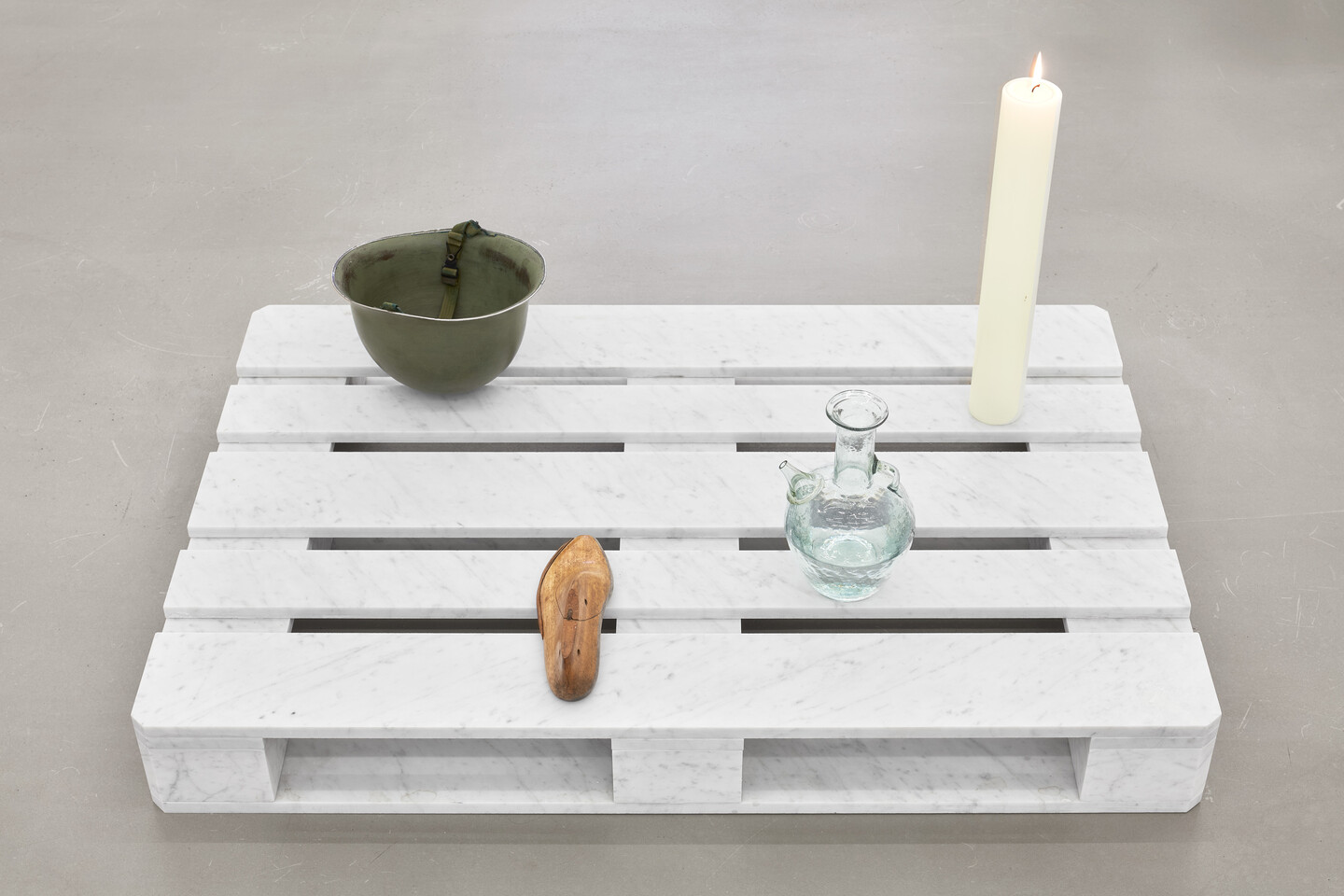
Marble palette, carafe made with glass debris from the Beirut Port blast (August 4, 2020), helmet used by members of a paramilitary militia during the Lebanese Civil Wars (1975-1990), wooden mould used by the artist’s grandfather to make shoes for amputees of World War II (1939-1945), wax candle, drinking water, 65 × 120 × 80 cm
Responding to the floor installation, a flickering neon on the wall is endlessly cycling between the Greek words for Amnesty and Amnesia, creating a space of tension between the duty to remember and the right to forget. AMNES(T)IA draws a line through 200 years of Lebanese history, where cycles of conflict were followed by sweeping amnesty laws that erased both responsibility and reckoning. Displayed alongside the neon is a printed pamphlet of the rarely published 1991 General Amnesty Law (Law 84/91), enacted at the close of the 15-year civil war, and which is itself a repetition of prior laws dating back to 1839.
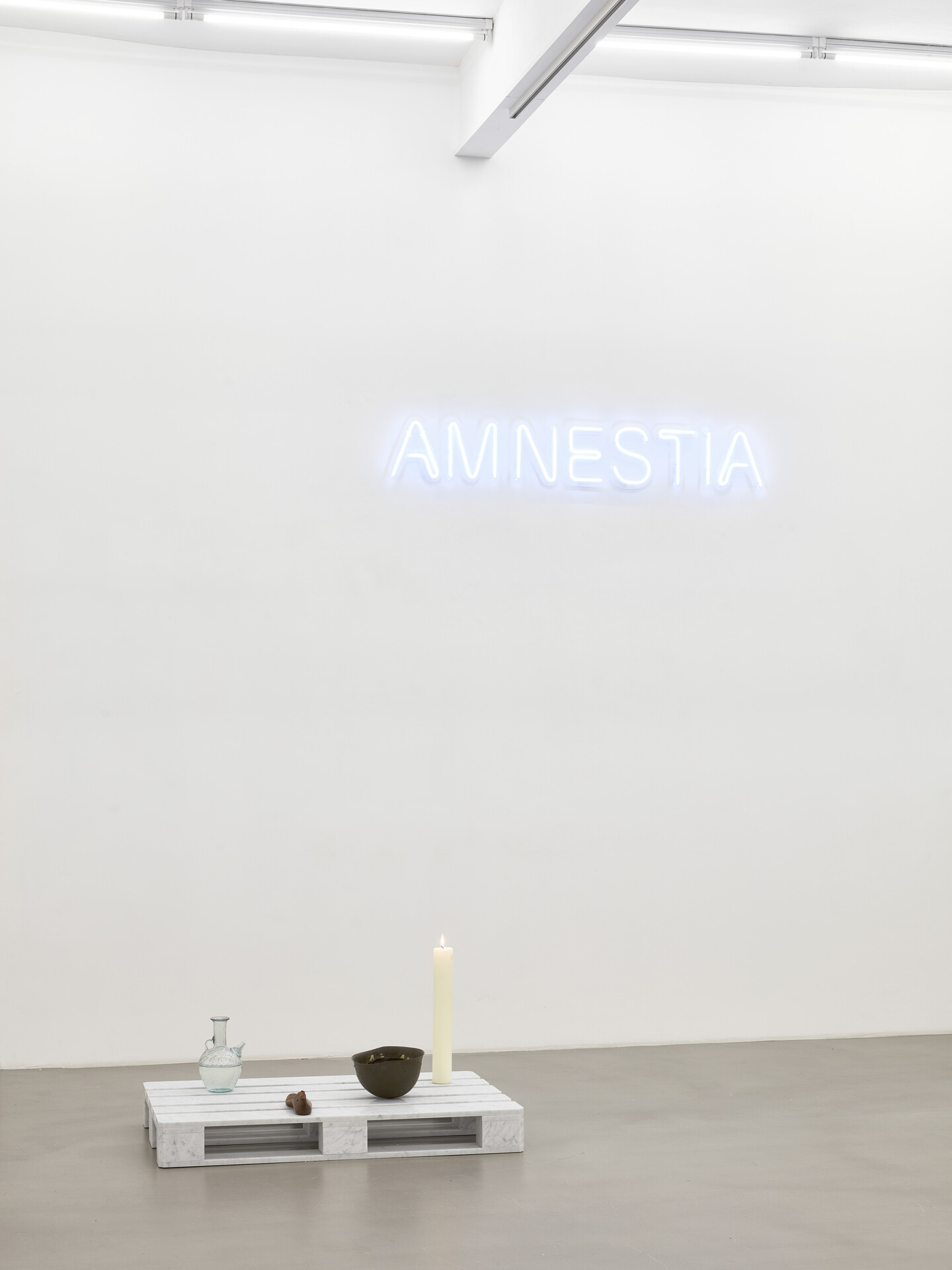
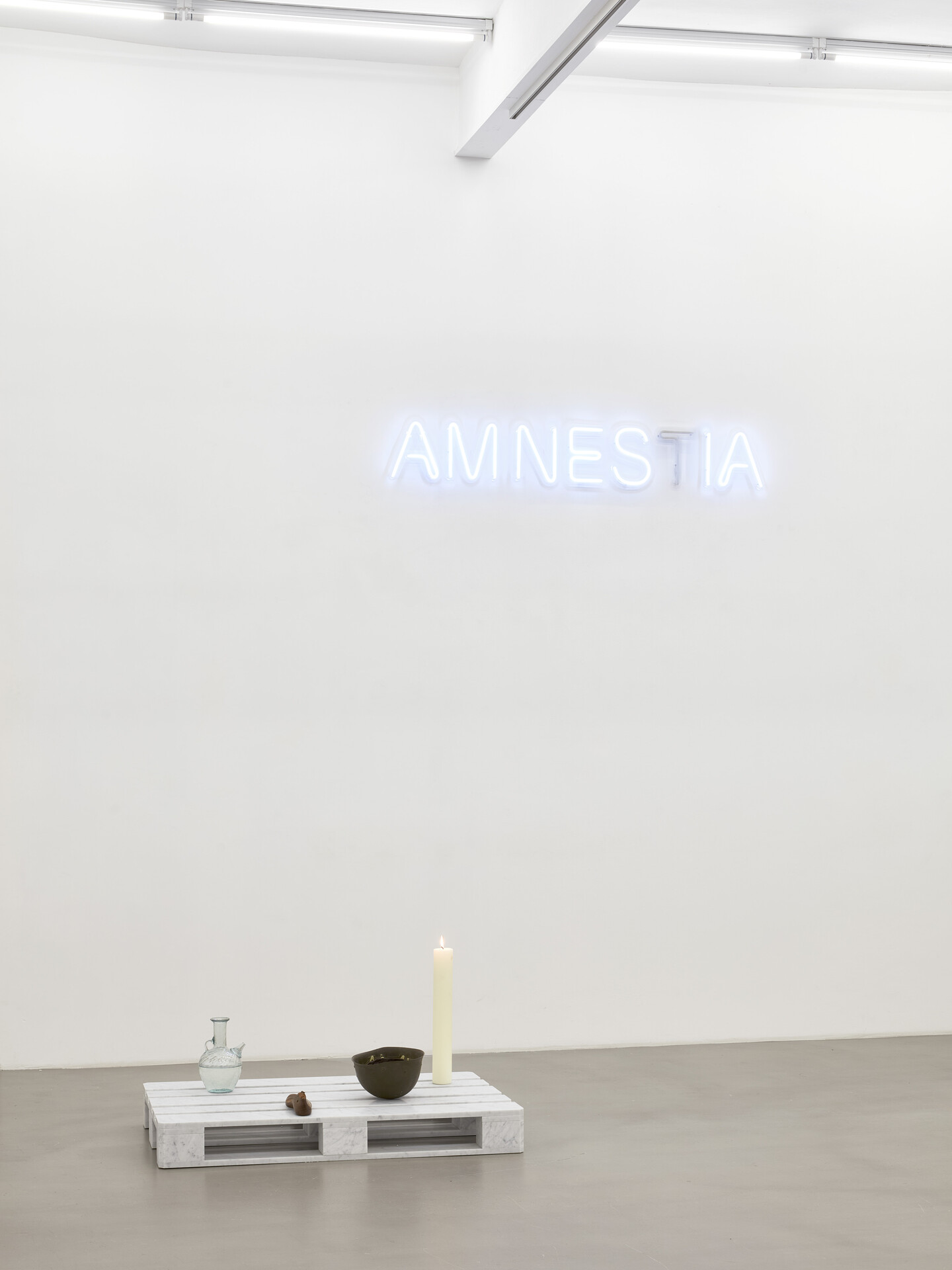
In the first-floor space, a ghostly herbarium of 40 plants and trees, catalogues the flora that survived the Hiroshima atomic bomb. Titled Hibakujumoku, the Japanese term meaning “survivor tree” the work depicts on etched glass each species that withstood the blast and continues to grow in Japan today. Bent, burned, and mutilated, they sprouted new life from their trunks and roots. The work quietly celebrates the biological resilience of these silent witnesses to nuclear apocalypse, inviting us to consider the memory they carry but also the hope they signal, for the day after.
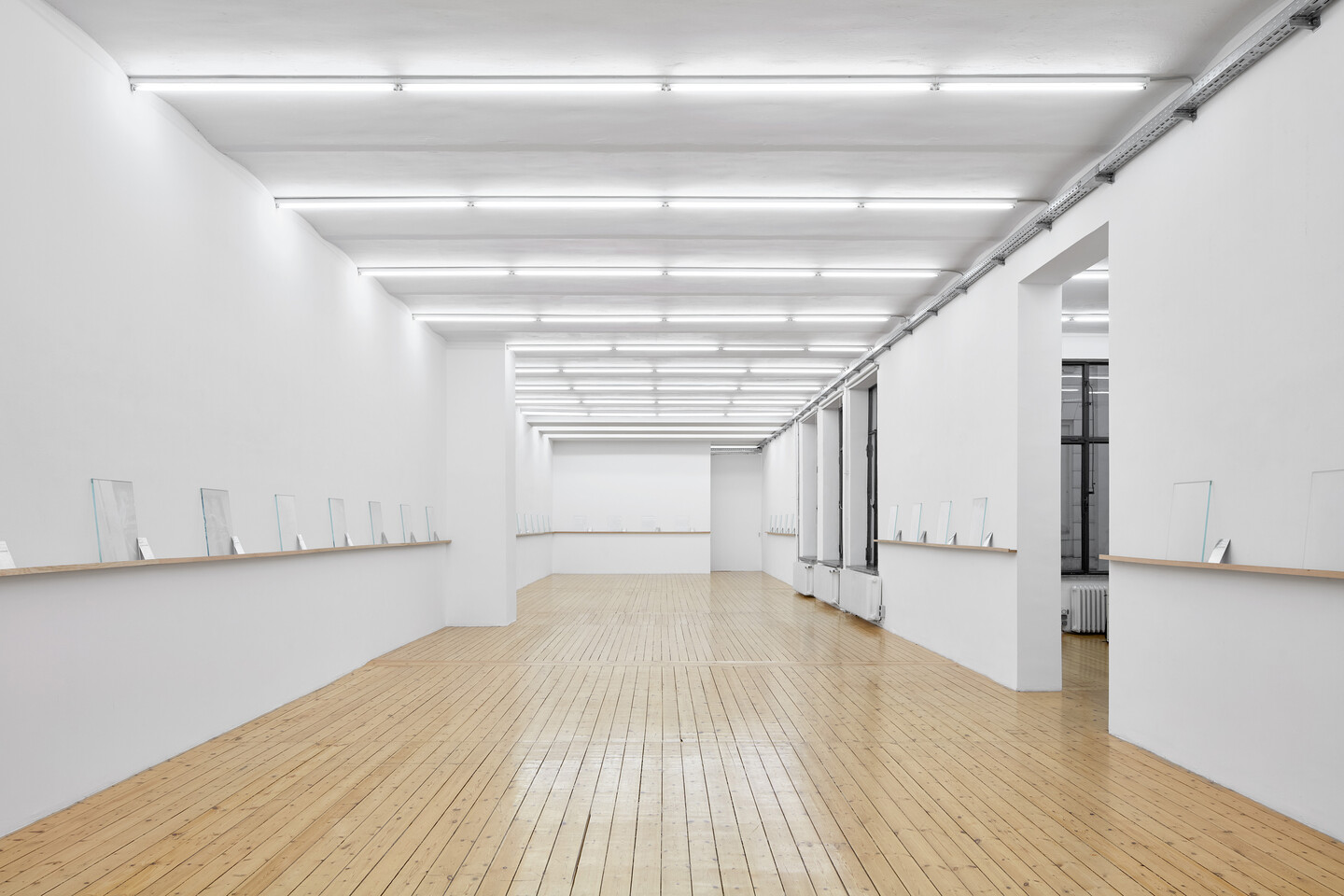
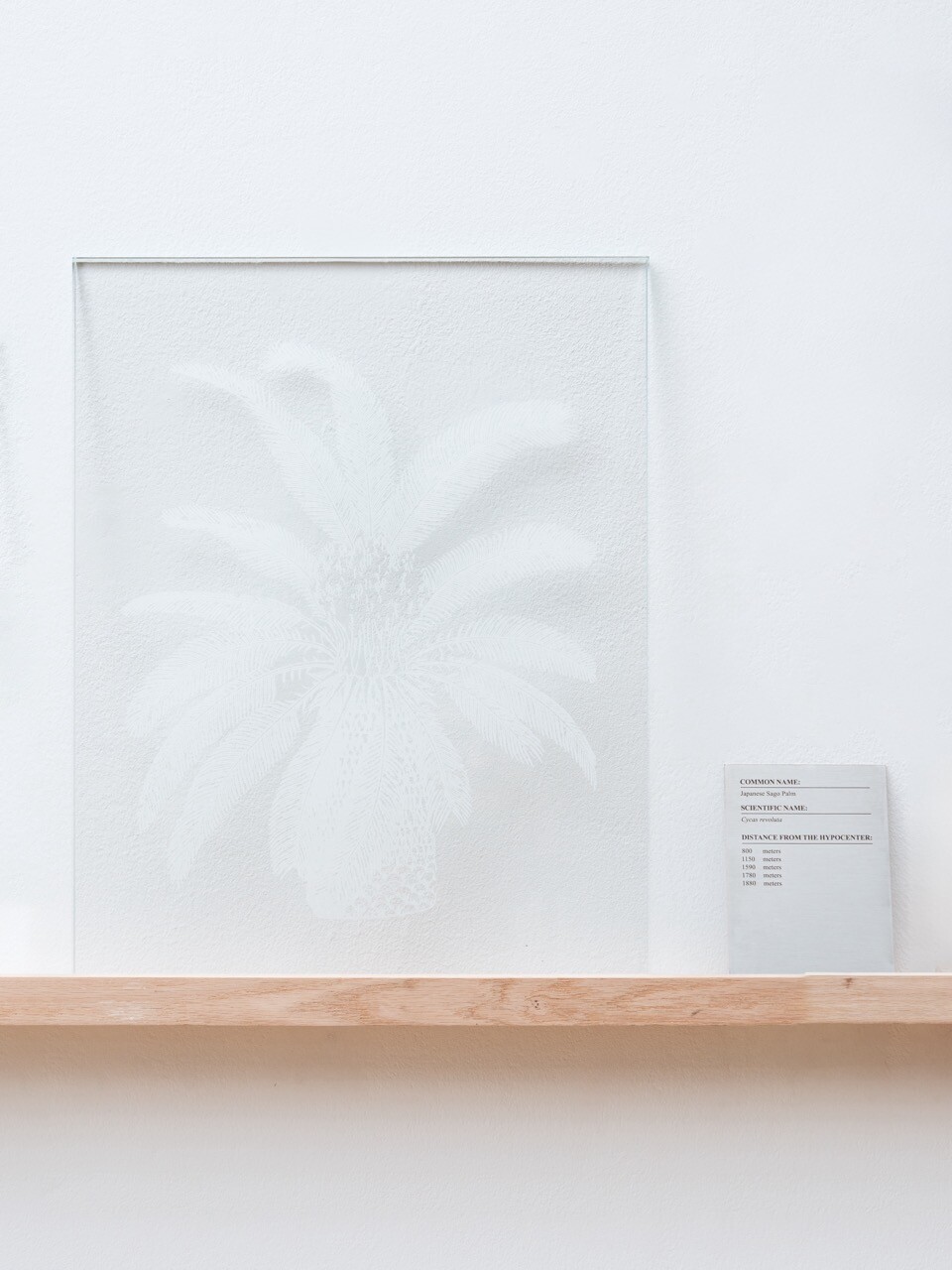
Engraved glass panel, engraved metal plate, wooden shelf, 47 × 55 × 2 cm
The exhibition furthers Tabet’s ongoing investigation into the layered intersections of personal memory, collective trauma, political silence and the making of official histories. Across three hauntingly precise yet poignant works, he weaves together time and material, entrusting to the care of the objects he creates the stories and memories of the past. Through this meditation on aftermath the artist highlights that what remains is not only ruin, but also testimony, and the quiet insistence of survival. The Day After proposes that no ending is absolute. Every explosion, war, and collapse is followed by a day after, one in which the past is neither buried nor resolved but continually negotiated. One that is rife with possibility.